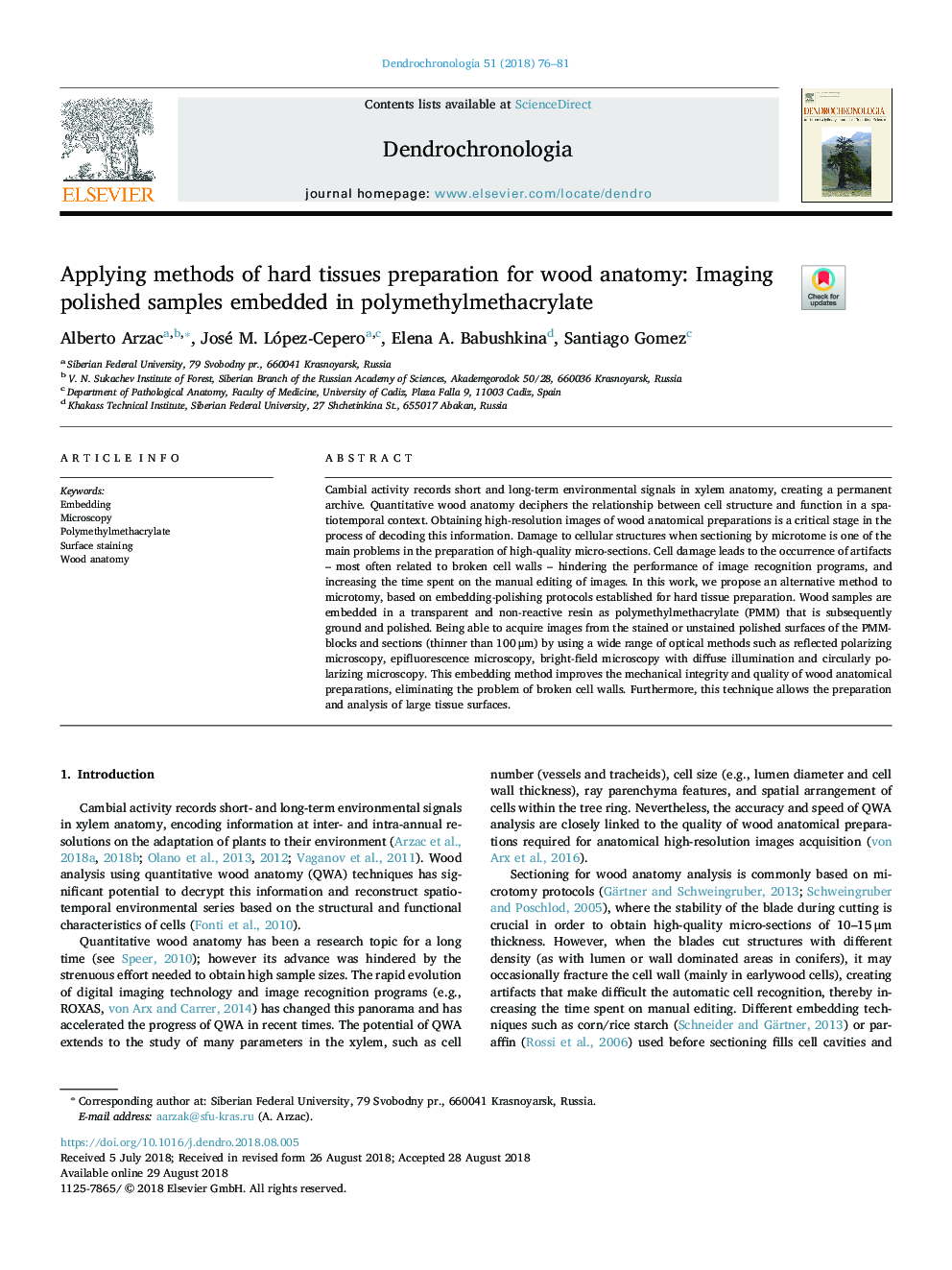| Article ID | Journal | Published Year | Pages | File Type |
|---|---|---|---|---|
| 9951703 | Dendrochronologia | 2018 | 6 Pages |
Abstract
Cambial activity records short and long-term environmental signals in xylem anatomy, creating a permanent archive. Quantitative wood anatomy deciphers the relationship between cell structure and function in a spatiotemporal context. Obtaining high-resolution images of wood anatomical preparations is a critical stage in the process of decoding this information. Damage to cellular structures when sectioning by microtome is one of the main problems in the preparation of high-quality micro-sections. Cell damage leads to the occurrence of artifacts - most often related to broken cell walls - hindering the performance of image recognition programs, and increasing the time spent on the manual editing of images. In this work, we propose an alternative method to microtomy, based on embedding-polishing protocols established for hard tissue preparation. Wood samples are embedded in a transparent and non-reactive resin as polymethylmethacrylate (PMM) that is subsequently ground and polished. Being able to acquire images from the stained or unstained polished surfaces of the PMM-blocks and sections (thinner than 100â¯Î¼m) by using a wide range of optical methods such as reflected polarizing microscopy, epifluorescence microscopy, bright-field microscopy with diffuse illumination and circularly polarizing microscopy. This embedding method improves the mechanical integrity and quality of wood anatomical preparations, eliminating the problem of broken cell walls. Furthermore, this technique allows the preparation and analysis of large tissue surfaces.
Related Topics
Physical Sciences and Engineering
Earth and Planetary Sciences
Atmospheric Science
Authors
Alberto Arzac, José M. López-Cepero, Elena A. Babushkina, Santiago Gomez,
